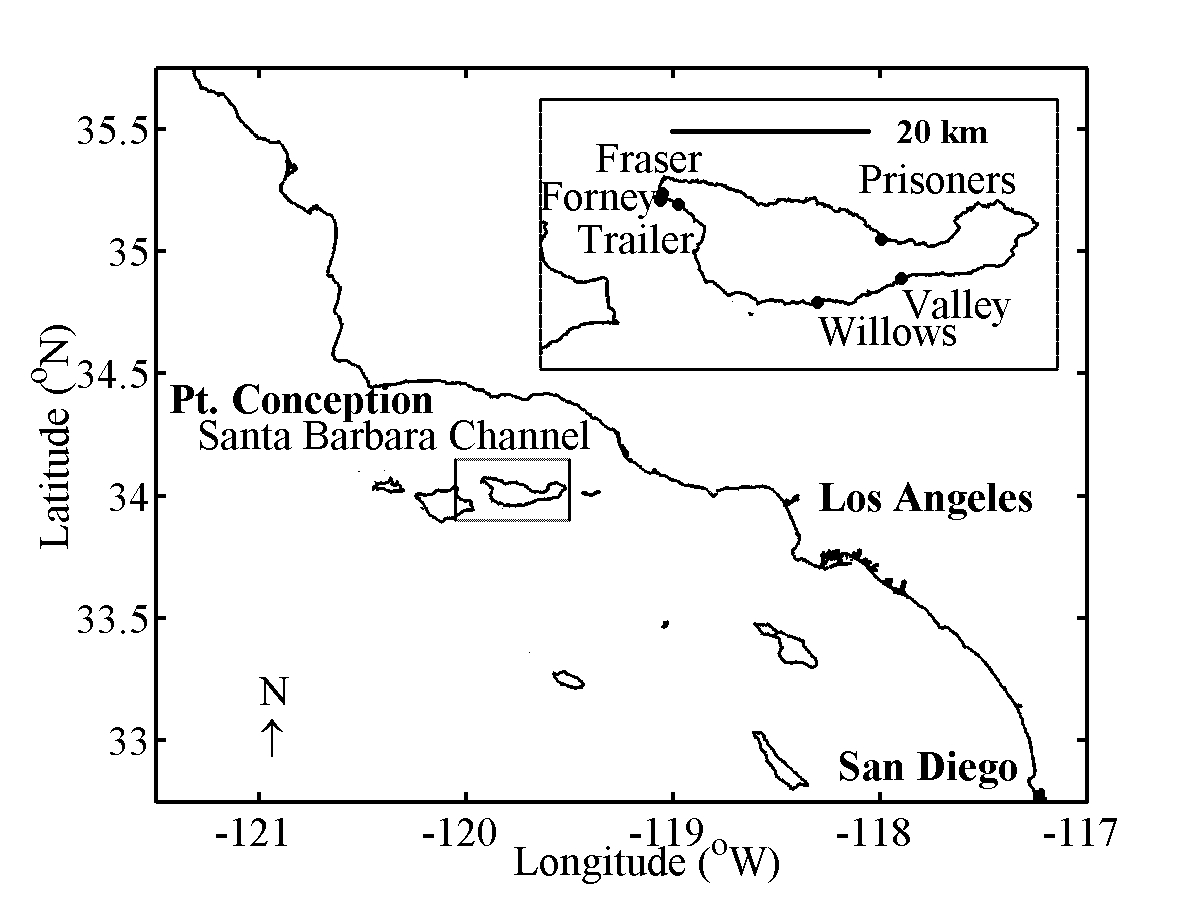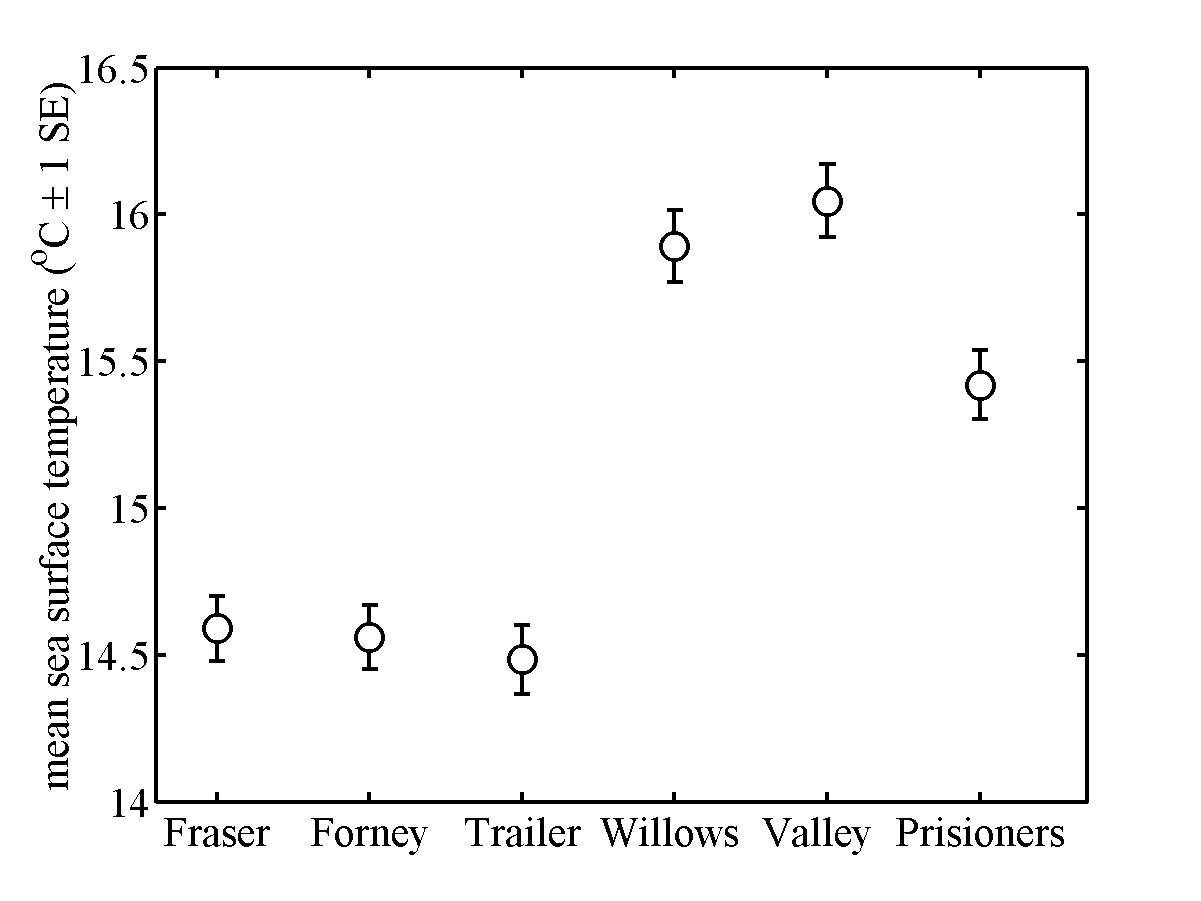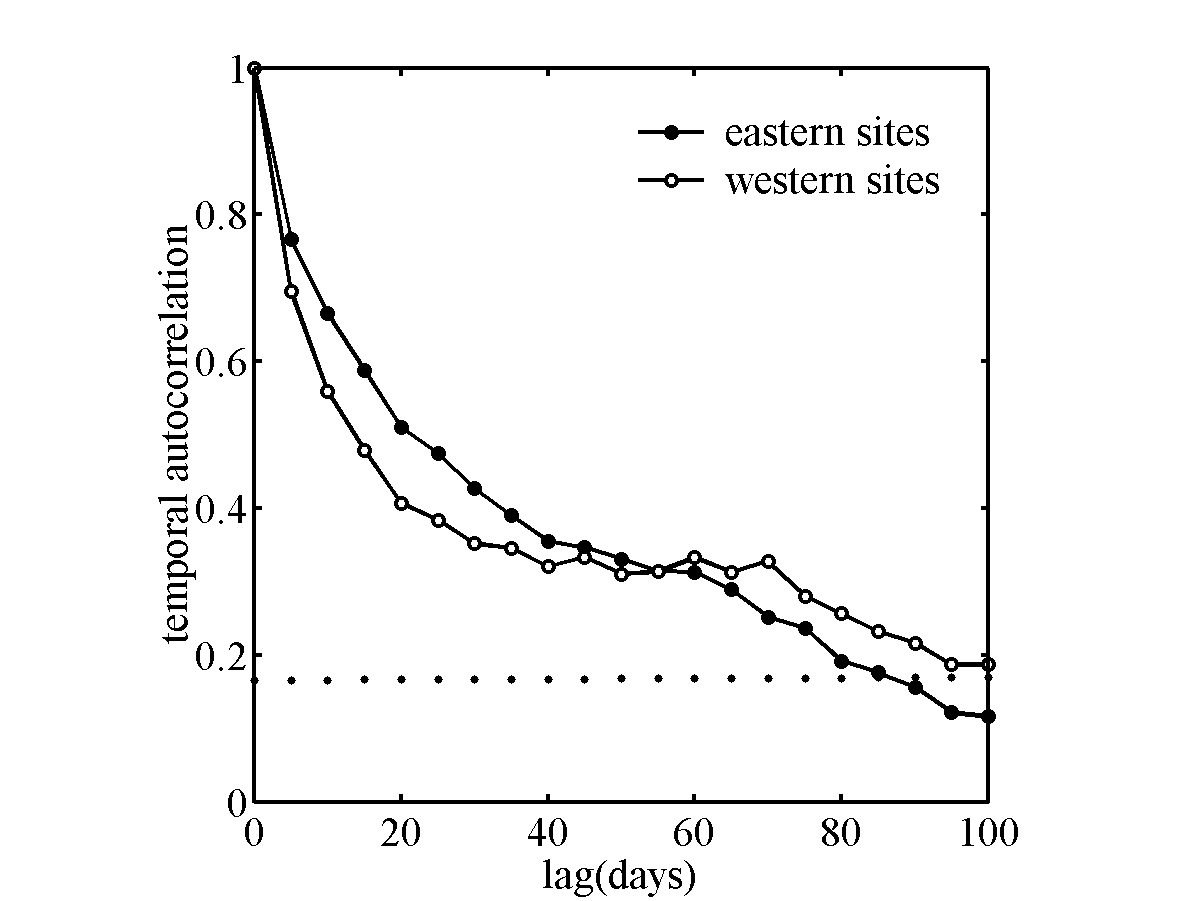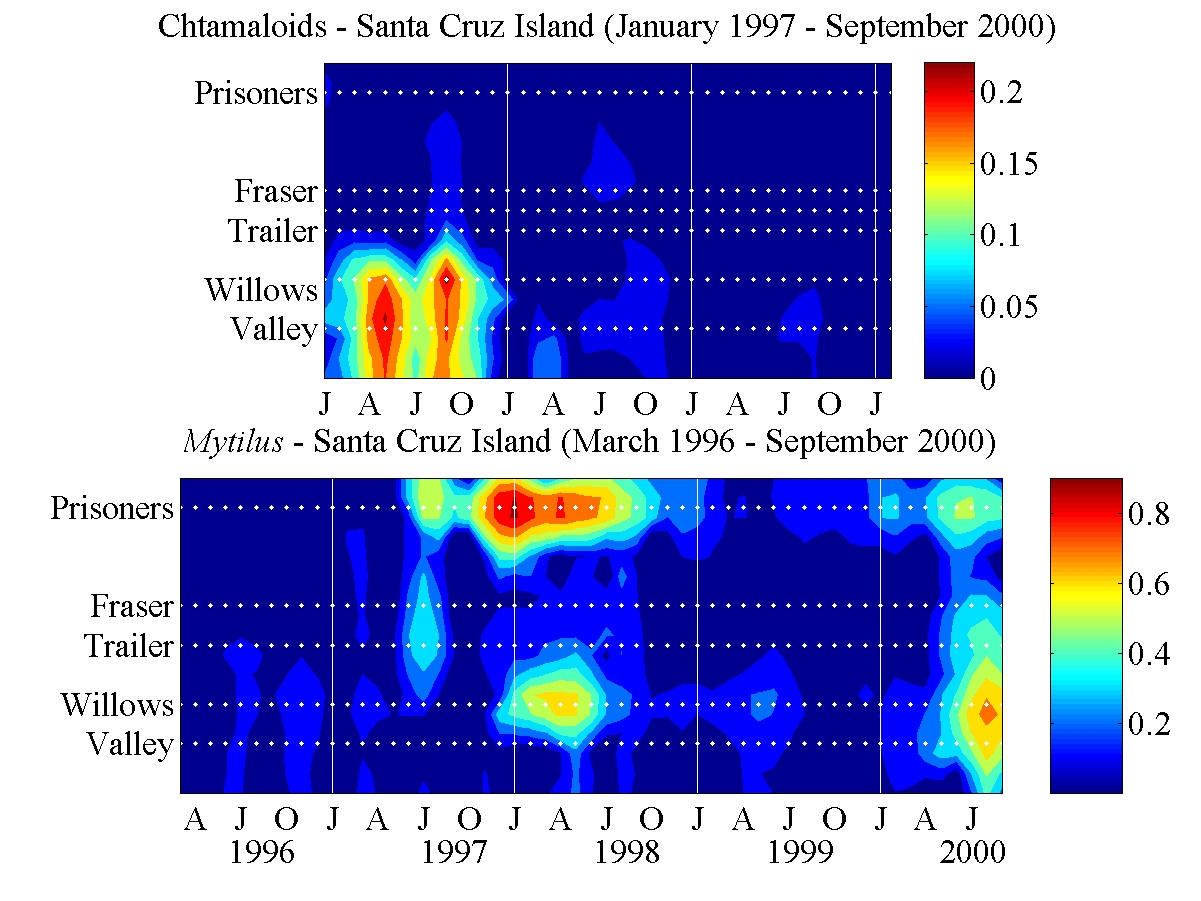
[pdf] Limnology & Oceanography (2005) 50:1473-1479
[url] Related article in Marine Biology
Introduction and Methods
The Santa Cruz Island, located in the northwest end of the southern California Bight, is subject to extremely dynamic oceanographic conditions. Strong gradients in environmetal conditions are observed over relatively small spatial scales. These gradients in environmental conditions are stable over time with the south shores of Santa Cruz Island (SCI) experiencing strong wave action and the influx of warmer subtropical waters. The north shores of SCI are relatively protected for wave action and experience colder water temperatures originating in the Point Conception upwelling center. The patchy environmetal setting creates a unique opportunity to investigate how different environmental regimes influence patterns of delivery of planktonic invertebrate larvae across the shores of SCI (fig. 1).
 |
| Figure 1. Map of the Southern California Bight with the inset showing Santa Cruz Island and sampling locations |
Spatial patterns of larval arrival are clustered in time over hundreds of meters to few kilometers. Thus, larval arrival is a site-scale scale process that may be characterized by physical processes aggregated over similar spatial scales. Here, we utilize the cross-shelf average of the first 3 km from 1-km resolution 5-day averaged sea surface temperature (SST) from the Advanced Very High Resolution Radiometer (AVHRR) to characterize site-scale oceanographic regime over six study sites distributed around SCI. Using larval colectors deployed in the intertidal zone in every site we have documented spatial and temporal patterns of larval arrival of dominant sessile intertidal invertebrates (mussels and barnacles) since 1996 Spatial and temporal patterns are examined through autocorrelation analysis, while potential causal mechanisms tested through correlation analysis between SST variability and larval arrival statistics.
Results and discussion
SST Variability
Examination of the time series of the six study study sites evidences large differences in the mean state and dynamics between sites (fig.2). The three sites located in the eastern part of the island (Prisioners, Valley and Willows) exhibit a higher mean SST than the sites located in northwestern end of the island (Trailer, Forney and Fraser). A large fraction of the observations over the western sites are lost due to cloud cover associated to the persistent presence of cold water.
 |
 |
| Figure 2. Long-term mean of 6 years of AVHRR SST at the study sites. | Figure 3. Mean temporal autocorrelation for all the western (open circles) and eastern (filled circles) sites. |
Autocorrelation analysis of the sites grouped by geographic location (northwest and east) shows that (cold) water temperatures persist over ~80 days (fig. 3). Sites locate in the eastern side experience less variability in SST conditions at shorter (monthly) and longer (semiannual) periods indicated by the smooth autocorrelation function at short lags and larger anticorrelation at long lags (fig. 3, dashed line). Sites located in the northwest shores appear under intense changes in ocean conditions evidence by the steep autocorrelation function and weak anticorrelation at longer time scales (fig. 3, solid line).
Using a space-time ordinary kriging model we interpolated the spatial time series of larval arrival around SCI (fig. 4). The spatiotemporal pattern indicates that larval arrival for barnacles and mussels is synchronous around SCI. Sites locates in the eastern portion recieve larger numbers of larvae (fig. 4)
 |
| Figure 4. Space-time patterns of larval arrival around Santa Cruz Island, CA. Top panel: Chthamaloid barnacle larvae. Bottom panel: Mytilus spp. mussel larvae |
Sites located on both shores of the island experience similar temporal patterns in larval arrival of barnacles which take place over very short events. Arrival of mussel larvae appears slightly different as sites on the eastern part of the island experience longer events than sites on the northwest shores.